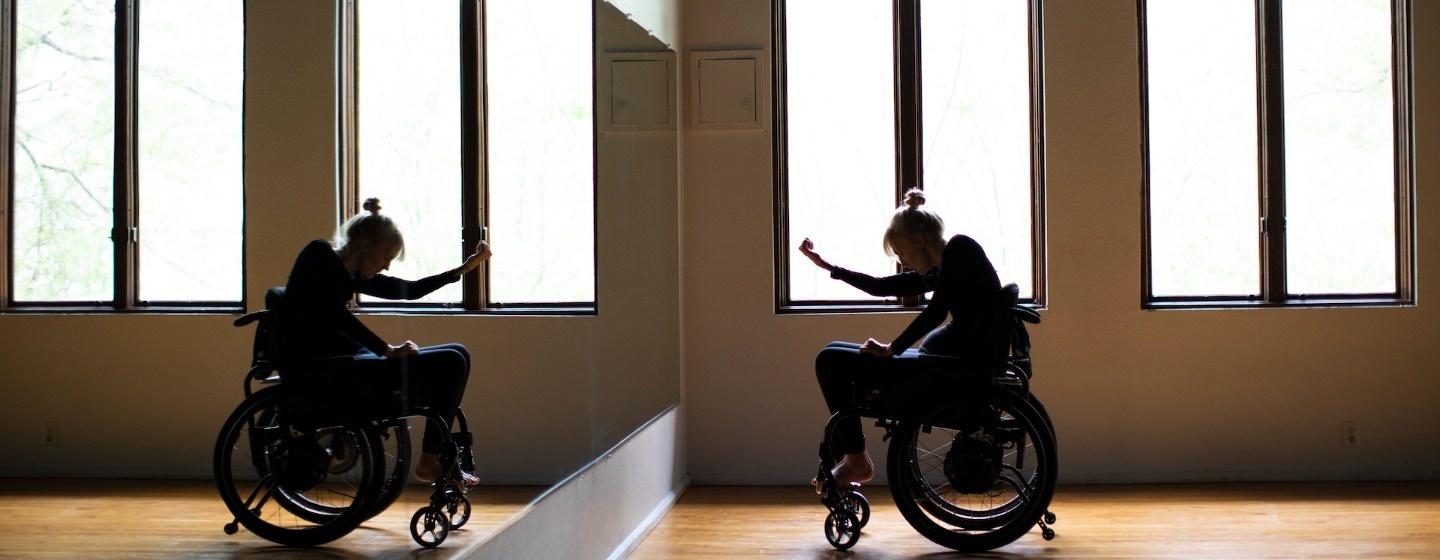When Kelsey Peterson initially set out to make a documentary, she never thought it would be about herself. She was planning to make a feature-length film about the progress being made with spinal cord injuries and what the current research climate in the field looked like.
But when the film wasn’t coming together the way it was planned, Peterson decided to turn the camera on herself. MOVE ME, which aired last year on PBS as part of the Independent Lens series, chronicles Peterson’s journey of accepting her new reality after being paralyzed at the age of 27.
“I wasn’t in a place where I was comfortable calling myself a person with a disability or owning the term disabled, let alone feeling empowered by it or feeling a sense of love associated with it,” Peterson said.
Peterson went from being a dancer and yoga instructor to needing a wheelchair 10 years ago when, on July 4, she dove into shallow water in Lake Superior. She broke her neck and has since been paralyzed from the chest down.
“The five-year process of making this film brought me to a very different place with my love for myself and my body and my disability,” Peterson said.
Up to one in four adults in the U.S. have some type of disability, according to the CDC. Eleven percent of adults have a mobility disability.
Language identifying any community can be tricky and nuanced. In discussing people with disabilities, Peterson said she personally thinks person-first language is important. She explained that some people don’t mind being described as a “disabled person.” But as a way to show that you’re aware of the person being the most important part, Peterson suggests saying someone is “a person with a disability.”
The Inclusive Language Guidelines developed by PBS member station GBH provide more detail about shifting toward person-first language. When possible, it’s best to ask a person what language they prefer.
A core principle of the PBS Editorial Standards & Practices is inclusiveness. The standards set forth that PBS strives to distribute content that “addresses a broad range of ideas, information, and perspectives. Inclusiveness means that content should reflect the views of people from different backgrounds.”
The standards emphasize that inclusiveness is essential both on the screen and behind the camera. “Producers should incorporate diverse perspectives as a way of making content more inclusive, accurate, and complete. To ensure that content reflects a broad range of viewpoints, producers must strive to hire, and retain, a diverse production staff. PBS believes that a diverse staff helps guard against the perpetuation of cultural stereotypes and leads to content that better serves the public as a whole.”
MOVE ME offers viewers a candid portrait of Peterson’s life as she explores her unexpected new identity, navigates her relationship with her father, figures out how to continue dancing, and learns about emerging potential treatments. She said she hopes her film shows how much accessibility matters. It affects many different facets of life from travel and intimacy to safety and being in a workplace. The film exemplifies the PBS Editorial Standards by giving voice directly to an often-underrepresented experience, and by being transparent about the filmmaker’s perspective.
Similarly, filmmaker Reid Davenport wanted to show viewers the world from his point of view.
With I DIDN’T SEE YOU THERE, Davenport takes viewers on a sometimes dizzying ride down sidewalks, on public transportation, and around his neighborhood that shows how difficult it can be to maneuver in a wheelchair in everyday life.
“In order to achieve the equity we’re all striving for, there really needs to be a consideration of our perspective and how we see the world,” Davenport explained.
I DIDN’T SEE YOU THERE aired on PBS in early 2023 as part of POV’s 35th season. In the film, Davenport uses a circus tent that goes up near his apartment building as an opportunity to teach viewers about “the history of freakdom” and how even now people with disabilities are oftentimes seen, even gawked at, but not really heard.
Davenport made the decision to not show his face on camera so viewers instead have to go by his voice.
He said he was not trying to make people uncomfortable, but he also would not go out of his way to make people comfortable. The film is an “invitation to my perspective,” Davenport said.
Davenport said the feedback he’s received about the film has exceeded his wildest dreams. The film has received significant award recognition, including the U.S. Documentary Directing Award at the 2022 Sundance Film Festival.
He and Peterson are both now working on new films. While neither one wants to be the focus of a film again, they both want to continue bringing further awareness to accessibility and disability issues. Their voices are an essential part of the inclusive tapestry of public media content.
“I hope people with disabilities feel empowered to tell their story and live their purpose and love themselves,” Peterson said.
Contact Standards & Practices at standards@pbs.org.



